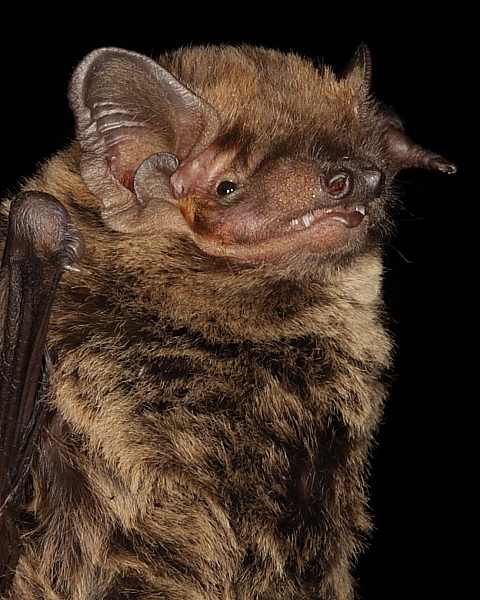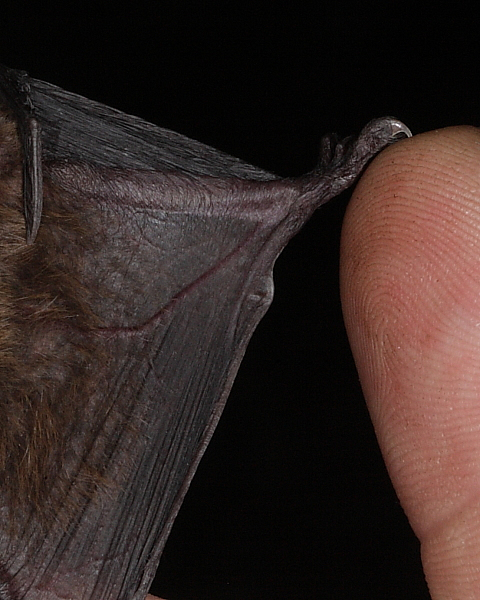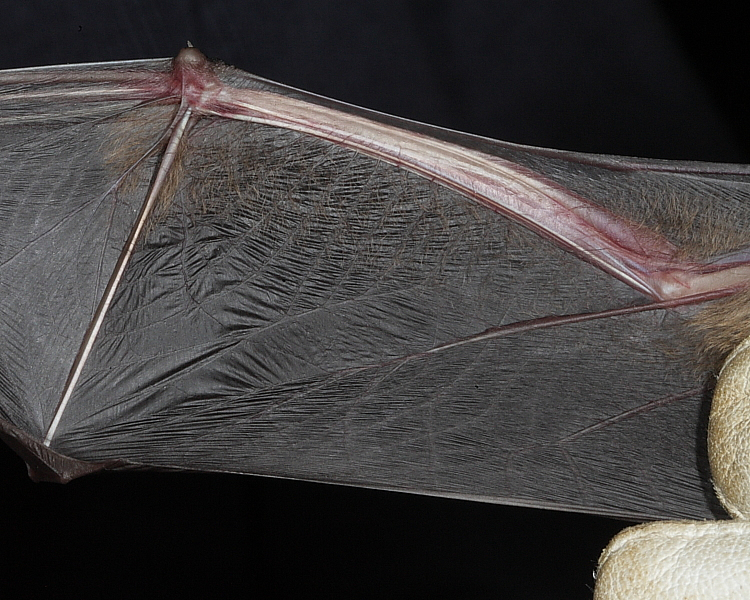Blagdon Lake Birds
Leisler's Bat Nyctalus leisleri [Kuhl, 1817]
(Accidental, resident)

- One, adult female, 9th August 2013 (D. Hargreaves, NR Milbourne.)
David Cottle (pers. comm.) informed me that Jon Russ believed he had recorded Leisler's Bat Nyctalus leisleri at Blagdon when he was working here, and I thought I might have also recorded it at Rugmoor. However, Daniel Hargreaves, quite rightly, cautioned me that it's not easy to separate Leisler's echolocation calls from Noctule and Serotine Bats, and that proof-positive would be obtained when we caught one, which we did on 9th August 2013 at Butcombe Bank. It is a rare bat with an unknown UK population and was placed on the red list of the IUCN 2006: Least Concern. The principal threat seems to be habitat destruction. It is a woodland bat that prefers to roost in natural holes and crevices, but will use buildings and accept bat boxes.
Leisler's forage in open habitats, especially around lakes and rivers, also over pastures flying quite high above the ground (10-70 metres according to Russ, 1999). Food typically consists of moths, beetles, caddis flies and other flies caught and devoured on the wing.
Echolocation frequency of maximum energy (FM/qCF call) peaks at 27.1 kHz (range 25.0-32.1) with an inter-pulse interval of 118.9 ms (range 107.3-313.1) and call duration of 8.3 ms (range 6.1-18.4).
Normal weight 13-18g, Forearm length 38.0-47.1 mm, Fifth finger length 43-51 mm, Third finger length 70-78 mm.
Other identification features: The outer edge of the ear is pale, as is the fold of skin that reaches the corner of the mouth, and the base of the hair is dark black-brown.



Bibliography (sources of information):
Bat Conservation Trust website
Dietz, C., Helverson, O. von, Nill, D. 2009. Bats of Britain, Europe and Northwest Africa. A&C Black Publishers Ltd., London.
Fisher, J., Francis, J. & Jones, Prof G. The Bats of Britain (an online guide). University of Bristol, School of Biological Sciences website.
Mathews F, Kubasiewicz LM, Gurnell J, Harrower CA, McDonald RA, Shore RF. (2018) A Review of the Population and Conservation Status of British Mammals. A report by the Mammal Society under contract to Natural England, Natural Resources Wales and Scottish Natural Heritage. Natural England, Peterborough. ISBN 978-1-78354-494-3. Natural England Access to Evidence Catalogue code JP025.
Russ, J. 2012. British Bat Calls A Guide to Species Identification. Pelagic Publishing, Exeter.